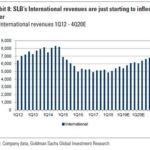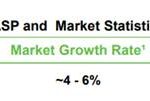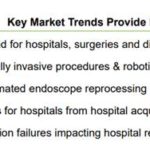Key Takeaways:
MMM reported 2Q18 revenue that were better than expected, with EPS in line after removing the one-time gain from the sale of its Communications Markets business. Revenue grew +7.4% y/y (+5.6% organic ex-FX), gross margins expanded by 120bps y/y, and operating margin increased 100bps mostly from better volume and productivity actions. Sales growth was broad based, with all segments seeing organic growth. Some of the beat this quarter was due to US customers accelerating their purchases ahead of an ERP roll-out in the US in Industrials, Safety & Graphics and Electronics & Energy (this has been implemented in Europe in the last 18 months). The impact from this implementation is a +50-100bps of growth pulled forward to 2Q18. Adjusted EPS grew 27% y/y thanks to organic growth, productivity efforts and a lower tax rate.
MMM returned $2.4B to shareholders via dividends and share repurchases this quarter. The management team increased the lower end of its share repurchase guidance to $4-5B from $3-5B.
The stock initially sold off as the management team adjusted its top-end EPS guidance for the year due to the sale of a business, but recovered since as the underlying fundamentals remain strong. Overall MMM has some good momentum in its pricing power, offsetting raw-material inflation. The new tariffs have little effect so far on the company’s costs, only estimated at 1c/share. However the management team is monitoring the impact from any increase in tariffs and possible retaliations, and could change sourcing and/or pricing increases if necessary. We are not changing our price target or position size at this point.









